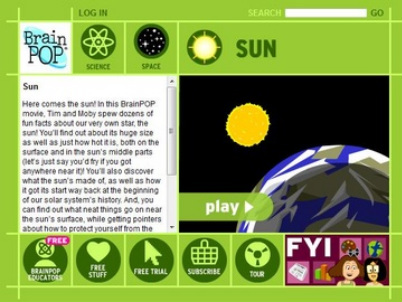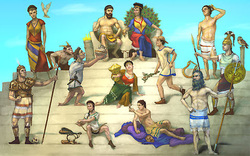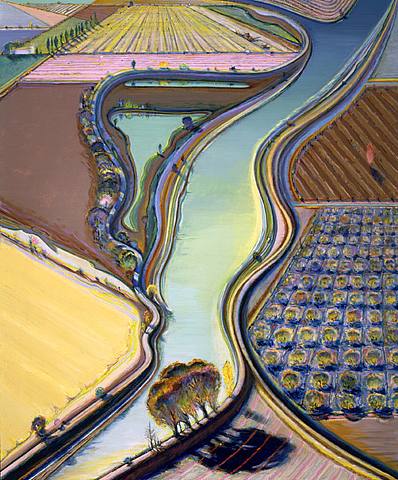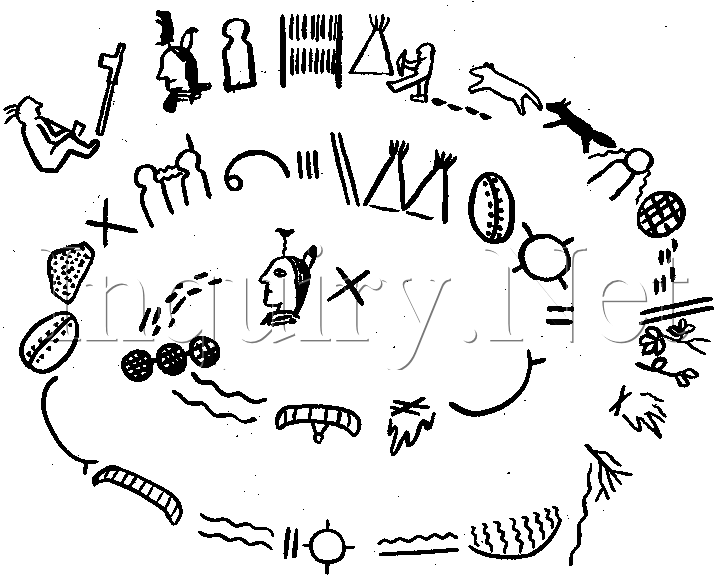|
|
|
|
|
|
|
|
|
|
| |
|
|
|
|
|
|
| |
|
|
| |
|
| ||
Posted February 9, 2016
California Native Bird Research
Essential Questions:
How could you diagram the life cycle of a bird?
What do native birds need to survive?
How do their adaptations help them with their life cycle?
If you had to sort all of the birds of California into two categories, what categories would you choose?
Project:
We will discuss these questions today before we begin our mini-research project on California native birds.
Birds are divided into two two orders: passerines and non-passerines. What does that mean?
Each of you will be assigned an order and family of bird to research. You may choose the species from the list.
You may click on the link below to begin your research. Focus on adaptations for survival.
- Beak and feet
- Appearance- color, body shape
- Mating and reproduction
- Defense
California Birds from A to Z
Have you ever found a feather and wondered to which bird it belongs? You can now look it up at the feather atlas.
We'll watch this movie as we study the life cycle of plants.



When did the National Park become recognized as a National Park and why was it chosen?
Scotty's Castle Tour
Grade Three:
CCSS.ELA-Literacy.W.3.4 With guidance and support from adults, produce writing in which the development and organization are appropriate to task and purpose. (Grade-specific expectations for writing types are defined in standards 1–3 above.)
CCSS.ELA-Literacy.W.3.5 With guidance and support from peers and adults, develop and strengthen writing as needed by planning, revising, and editing. (Editing for conventions should demonstrate command of Language standards 1-3 up to and including grade 3 here.)
CCSS.ELA-Literacy.W.3.6 With guidance and support from adults, use technology to produce and publish writing (using keyboarding skills) as well as to interact and collaborate with others.
CCSS.ELA-Literacy.W.3.7 Conduct short research projects that build knowledge about a topic.
3. Research and Information Fluency (all)
4. Critical Thinking, Problem Solving, and Decision Making (all)
5. Digital Citizenship (A)
6. Technology Operations and Concepts (all)
Have you ever found a feather and wondered to which bird it belongs? You can now look it up at the feather atlas.
http://www.fws.gov/lab/featheratlas/index.php
Click HERE for an interesting BrainPop website about the sun.

Learn about our Solar System HERE
What is a Solar Eclipse? Watch HERE
Most of the constellations are named after Greek gods and goddesses.
If you are interested in learning more about the elements of Greek Mythology, I have posted a couple of websites for your reference. You might like to learn about the twelve Greek gods and goddesses and direct your focus on the heroic traits they each possess.
Click to read more about: Ancient Greek Gods
Which mythical Greek figure are you? Take this QUIZ!
Nasa's Space Place
A collection of sites about the Moon HERE
In the afternoon, we will alternate our focus between Social Studies and Science units. At the beginning of school, we will focus on the Social Studies unit learning about landforms, natural resources, and California's regions and natural resources.
When we complete our Social Studies unit, we will shift our focus to our first Science unit on Sun, Moon, and Stars.
SOCIAL STUDIES

Art and Social Studies
When possible, we will integrate art with our current curriculum.
As I was previewing our Social Studies curriculum regarding natural landforms and manmade features--I thought of the art created by my distinguished UC Davis art professor Wayne Thiebaud. Wouldn't it be fun to create our own art inspired by him?!?
We will begin our first FOSS Science Unit "Sun, Moon, and Stars" in October. The weather will hopefully be clear and the moon is an October motif, so it is an appropriate unit to kick off our 3rd grade exploration of science. The students will keep a night log of the phases of the moon.
For a schedule of the moon's rise and set times in San Jose, click HERE.
Can't see the moon because it is too cloudy or too late? For a FOSS handy calendar showing the moon phase on any given day, click HERE.
SUN, MOON, AND STARS
Learn About Moon Phases Learn about the 8 phases of the moon
Moon Phases Model Interact with this simple model of the 8 phases of the moon
Earth/Moon/Sun Interactive Explore the interactions of the Earth, Moon and Sun in the Phases of the moon Earth/Moon/Sun Position Simulation Observe and control the earth and moon orbits
Earthweek.com A digital weekly diary of the planet

Interesting sites for our Science Units:
FOSSWeb Interactive activities, a newsletter, and other great projects and resources.

MATTER AND ENERGY
Light & Dark Try this interactive experiment with light and dark
Light & Shadows Try this interactive experiment with light and shadows
STRUCTURES OF LIFE
Biomes of the World Learn about the world's aquatic and terrestrial biomes
Living Things - Variation Click and drag the living things into the correct group
Encyclopedia of Life A collaborative, ongoing effort to organize information about all the species on earth
Build Your Wild Self - NY Zoos Avatar generator with human and animal parts
Animal Jam National Geographic for Kids. Learn about animals while playing a fun game. (recommended by Amelia and Miranda!)
Posted April 30, 2013
Here is a video that we watched in class in preparation for our field trip to Natural Bridges State Park. It is a Marine Preserve of the highest protection status. Collecting at the park is prohibited. Please explore gently and with care.
Posted March 1, 2013
Next week we are going to take a "Virtual Field Trip" to Indian Grinding Rock State Park by watching these videos!
Posted February 24, 2013
We are going to create Story Sticks this week. We'll learn about Native American pictographs using the pictographs and stories on THIS website. What do you think is the story for the pictograph below?
You may have heard of the Gagnam Style parodies. I'm sure you will enjoy "NASA, Johnson Style!"
Here are some great Animal Websites
Animal Appearance
Los Angeles Zoo
San Diego Zoo
Smithsonian: National Zoo
eNature Field Guides
Ranger Rick: National Wildlife Federation
Bird Sounds
Animal Tracks
Mammal Tracks
Whale Sounds
Project Puffin
Groundhog Day
Nature of Wildworks
SeaWorld: Animal Bytes
Animal Land
National Geographic Kids
National Geographic Video for Kids
Sheppard Software Animal Link
Ocean Creatures
Bird Beak Adaptations
Pollen Park: Learn About Bees
Build an Animal Habitat
Draw an Animal Habitat (PBS)
Animal Report Sites
| ||
|
|
|
|
|
|
|
|
|
|
| |
|
|
|
|
|
|
| |
|
|
| |
|
| ||
Posted March 17, 2015
Today we watched this FOSS video about Stars.
Posted March 2, 2015
Today we will "Build our Wild Selves" and learn more about animal adaptations.
Posted November 3, 2014
With the mentor text "Corn is Maize' by Aliki, we are learning about the life cycle and value of "The Gift of the Indians"!
Posted October 21, 2014
Partial Solar Eclipse Tomorrow!
Mia's parents have given us some solar glasses so we may view the eclipse beginning at 2pm.
Posted October 20, 2014
Venus Fly Traps
Click HERE for a video of a Venus Fly Trap catching a fly
Posted March 9, 2014
Death Valley Project Based Learning (PBL) Challenge
Essential Questions:
What do we need to know to begin this project?
What do we need to find out?
How do we divide up the tasks among the groups to accomplish our challenge?
How do we decide how we want to publish our information to an on-line source?
Facts that we are required to research and post:
Location of National Park
Animals that live in that Park area
What are park's main features or resources?
How many people visit the park each year? Animals that live in that Park area
What are park's main features or resources?
When did the National Park become recognized as a National Park and why was it chosen?
Death Valley Sources
Video of Death Valley (click link for large size or view below)
Scotty's Castle Tour
CCSS Writing Standards Addressed through this project (Our "job")
CCSS.ELA-Literacy.W.3.4 With guidance and support from adults, produce writing in which the development and organization are appropriate to task and purpose. (Grade-specific expectations for writing types are defined in standards 1–3 above.)
ISTE Standards addressed through this project:
1. Creativity and Innovation (all)
2. Communication and Collaboration (A,B,D)3. Research and Information Fluency (all)
4. Critical Thinking, Problem Solving, and Decision Making (all)
5. Digital Citizenship (A)
6. Technology Operations and Concepts (all)
Posted February 16, 2014
California Native Bird Research
Essential Questions:
How could you diagram the life cycle of a bird?
What do native birds need to survive?
How do their adaptations help them with their life cycle?
If you had to sort all of the birds of California into two categories, what categories would you choose?
Project:
We will discuss these questions next Monday before we begin our mini-research project on California native birds.
Birds are divided into two two orders: passerines and non-passerines. What does that mean?
Each of you will be assigned an order and family of bird to research. You may choose the species from the list. The sailboats will research passerines; the motorboats will research non-passerines.
You may click on the link below to begin your research. Focus on adaptations for survival.
- Beak and feet
- Appearance- color, body shape
- Mating and reproduction
- Defense
Non-passerines: Ducks, Geese, and Swans • Partridges, Grouse, Turkeys, and Old World Quail • New World Quail •Loons • Grebes • Albatrosses • Shearwaters and Petrels • Storm petrels • Tropicbirds • Boobies and Gannets •Pelicans • Cormorants • Darters • Frigatebirds • Bitterns, Herons, and Egrets • Ibises and Spoonbills • Storks • New World Vultures • Hawks, Kites, and Eagles • Caracaras and Falcons • Rails, Gallinules, and Coots • Cranes •Lapwings and Plovers • Oystercatchers • Stilts and Avocets • Sandpipers, Curlews, Stints, Godwits, Snipes, and Phalaropes • Skuas • Gulls, Terns, and Skimmers • Auks, Murres, and Puffins • Pigeons and Doves • Lories, Parakeets, Macaws, and Parrots • Cuckoos, Roadrunners, and Anis • Barn owls • Typical owls • Nightjars • Swifts •Hummingbirds • Kingfishers • Woodpeckers, Sapsuckers, and Flickers
|
Passerines: Tyrant flycatchers • Shrikes • Vireos • Jays, Crows, Magpies, and Ravens • Larks • Swallows and Martins • Chickadees and Titmice • Verdin • Bushtits • Nuthatches • Treecreepers • Wrens • Dippers • Kinglets •Megaluridae • Phylloscopidae • Gnatcatchers • Old World Flycatchers • Thrushes • Babblers • Mockingbirds and Thrashers • Starlings • Wagtails and Pipits • Waxwings • Silky-flycatchers • Longspurs and snow buntings • Wood-warblers • Tanagers • American sparrows, Towhees, Juncos, and Longspurs • Cardinals, Saltators, and Grosbeaks •Blackbirds, Meadowlarks, Cowbirds, Grackles, and Orioles • Finches • Old World sparrows
|
California Birds from A to Z
|
Have you ever found a feather and wondered to which bird it belongs? You can now look it up at the feather atlas.
http://www.fws.gov/lab/featheratlas/index.php
Posted January 16, 2014
We will watch this video to learn about the inspiration and tenacity (our word of the week) of Dr. Martin Luther King, Jr.
Posted December 6, 2013
Here is a word cloud made from sentences describing what we learned from the visit from Ava's grandfather, Dr. Schraa, a brain expert.
Posted December 6, 2013
Below is a Tagxedo Word Cloud that we created as a class today. The students each entered five words that remind them of the Scientific Process in the survey form (below). Words that appeared most often in the survey are larger.
Posted December 5, 2013
Please fill out the form below. We will use some of the information to create a Word Cloud about our knowledge of the scientific process. We will use your last response to create something for Dr. Shraa, who shared his expertise about the brain today.
Posted December 3, 2013
The Scientific Method
Posted November 1, 2013
Bill Nye Moon Phase Video
Posted October 2, 2013
We will begin our Moon Observation on Friday, October 4 with the New Moon. Use the "Current Moon" widget below to help you determine if you will REALLY be able to see the moon on a particular night.
Watch and enjoy these videos--and LEARN the phases of the moon!
What causes earth's seasons?
Click HERE for an interesting BrainPop website about the sun.

Learn about our Solar System HERE
What is a Solar Eclipse? Watch HERE
Most of the constellations are named after Greek gods and goddesses.
If you are interested in learning more about the elements of Greek Mythology, I have posted a couple of websites for your reference. You might like to learn about the twelve Greek gods and goddesses and direct your focus on the heroic traits they each possess.
Click to read more about: Ancient Greek Gods
Which mythical Greek figure are you? Take this QUIZ!
Nasa's Space Place
A collection of sites about the Moon HERE
In the afternoon, we will alternate our focus between Social Studies and Science units. At the beginning of school, we will focus on the Social Studies unit learning about landforms, natural resources, and California's regions and natural resources.
When we complete our Social Studies unit, we will shift our focus to our first Science unit on Sun, Moon, and Stars.
SOCIAL STUDIES

Third graders always look forward to making their own salt and flour map of California showing the diverse topography of our state.
Q: Can you name the four California regions already? The answer is below the salt and flour map.
A: California's four regions are Coastal, Mountains, Valley, and Desert
 |
Navajo Corn Grinding (1927)
Corn Grinding Music from the Navajo Nation
White corn powder is offered to the gods and then sprinkled on the singers,
dancers, and the corn grinders as they perform this traditional ceremonial song.
We listened to this piece during music class this week.
Here's a Landform Video with lots of definitions!
|
When possible, we will integrate art with our current curriculum.
As I was previewing our Social Studies curriculum regarding natural landforms and manmade features--I thought of the art created by my distinguished UC Davis art professor Wayne Thiebaud. Wouldn't it be fun to create our own art inspired by him?!?
Below is his "Winding River" (a natural landform AND a valuable natural resource)
Below is his "Towards 280."
Here's a good link for later this year when we study our Government and our country's symbols. Click HERE
for Ben's (as in Ben Franklin) Guide to U.S. Government for Kids.
SCIENCE
We will begin our first FOSS Science Unit "Sun, Moon, and Stars" in October. The weather will hopefully be clear and the moon is an October motif, so it is an appropriate unit to kick off our 3rd grade exploration of science. The students will keep a night log of the phases of the moon.
For a schedule of the moon's rise and set times in San Jose, click HERE.
Can't see the moon because it is too cloudy or too late? For a FOSS handy calendar showing the moon phase on any given day, click HERE.
SUN, MOON, AND STARS
Learn About Moon Phases Learn about the 8 phases of the moon
Moon Phases Model Interact with this simple model of the 8 phases of the moon
Earth/Moon/Sun Interactive Explore the interactions of the Earth, Moon and Sun in the Phases of the moon Earth/Moon/Sun Position Simulation Observe and control the earth and moon orbits
Earthweek.com A digital weekly diary of the planet

 |
| Pointing at the sun. Our partner is recording the movement of our arm during the day. |
Interesting sites for our Science Units:
FOSSWeb Interactive activities, a newsletter, and other great projects and resources.

MATTER AND ENERGY
Light & Dark Try this interactive experiment with light and dark
Light & Shadows Try this interactive experiment with light and shadows
STRUCTURES OF LIFE
Biomes of the World Learn about the world's aquatic and terrestrial biomes
Living Things - Variation Click and drag the living things into the correct group
Encyclopedia of Life A collaborative, ongoing effort to organize information about all the species on earth
Build Your Wild Self - NY Zoos Avatar generator with human and animal parts
Animal Jam National Geographic for Kids. Learn about animals while playing a fun game. (recommended by Amelia and Miranda!)
Posted April 30, 2013
Here is a video that we watched in class in preparation for our field trip to Natural Bridges State Park. It is a Marine Preserve of the highest protection status. Collecting at the park is prohibited. Please explore gently and with care.
Posted March 1, 2013
Next week we are going to take a "Virtual Field Trip" to Indian Grinding Rock State Park by watching these videos!
Posted February 24, 2013
We are going to create Story Sticks this week. We'll learn about Native American pictographs using the pictographs and stories on THIS website. What do you think is the story for the pictograph below?
You may have heard of the Gagnam Style parodies. I'm sure you will enjoy "NASA, Johnson Style!"
Los Angeles Zoo
San Diego Zoo
Smithsonian: National Zoo
eNature Field Guides
Ranger Rick: National Wildlife Federation
Bird Sounds
Animal Tracks
Mammal Tracks
Whale Sounds
Project Puffin
Groundhog Day
Nature of Wildworks
SeaWorld: Animal Bytes
Animal Land
National Geographic Kids
National Geographic Video for Kids
Sheppard Software Animal Link
Ocean Creatures
Bird Beak Adaptations
Pollen Park: Learn About Bees
Build an Animal Habitat
Draw an Animal Habitat (PBS)








